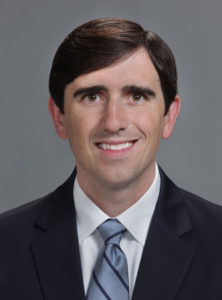Shoulder Instability Surgeon

Are you an athlete who participates in a sport that involve repetitive overhead motions? If so, you may be at risk of developing shoulder instability which requires surgical repair. Dr. Robert Boykin provides diagnosis and arthroscopic stabilization surgery for patients in Asheville who are experiencing shoulder instability. Contact Dr. Boykin’s team today!
Shoulder Anatomy
The shoulder is known as the glenohumeral joint and is composed of the humeral head (ball) and glenoid area of the scapula (socket). This ball and socket configuration gives the shoulder the largest range of motion of any joint in the body. The extreme mobility of the joint allows a person to perform overhead activities such as throwing a baseball or serving in tennis, but comes at the expense of stability.
What is a Shoulder Dislocation?
To allow for such motion, the shoulder is stabilized by soft tissue restraints (rather than bony constraints) such as ligaments/capsule and a rim of cartilage the surrounds the socket called the labrum. When a shoulder dislocation occurs, the ball comes out of the socket. In the majority of cases, this traumatic event causes damage to the soft tissue stabilizers of the shoulder including tearing of the labrum and ligaments. In specific situations or multiple dislocations, there may also be damage to the bone of the glenoid or of the humeral head (called a Hill-Sachs lesion). Shoulder surgeon, Dr. Robert Boykin treats patients in Asheville, Arden, Fletcher and surrounding North Carolina communities who have suffered a shoulder dislocation.
Initial Treatment for a Shoulder Dislocation
The initial treatment for any shoulder dislocation is to reduce the shoulder (or put the ball back into the socket). X-rays are then needed to confirm that the shoulder is in the appropriate position and to look for any bony injuries, such as a fracture. Once the shoulder is reduced, a decision can be made as to whether the patient can be treated non-surgically or if a surgical procedure is needed to stabilize the joint. In cases that need an operation, the majority of the time this can be performed arthroscopically.
What is Arthroscopic Stabilization Surgery?
During the surgery the shoulder is first examined by Dr. Boykin to confirm the direction and degree of instability. Next, a small camera is used to visualize the entire shoulder joint and identity the areas of damage. Small instruments are then used to place anchors into the bone on the glenoid that contain strong sutures. These sutures are then used to repair the torn labrum and ligaments, restore the anatomy of the joint back to its natural position, and to effectively “tighten” the shoulder back to normal. The shoulder is examined again to confirm resolution of the instability.
In the majority of patients, arthroscopic stabilization has been shown to be highly effective in eliminating shoulder instability and allowing patients to return back to full activity. In certain situations such as longstanding instability, bone loss from the glenoid or humerus, or a dislocation that can’t be manually reduced, a specialized open procedure may be necessary.
Recovery Following Arthroscopic Stabilization Surgery
After surgery patients are placed into a sling and an individualized physical therapy program is started. The specific progression of therapy will depend on the configuration of the injury and type of repair. This typically consists of gentle passive range of motion followed by active motion, strengthening, and an eventual full return to contact activities around 4-6 months. The sling is usually worn for 6 weeks.
For more information on shoulder injuries including shoulder dislocations and shoulder instability, or to learn more about arthroscopic stabilization, please contact the office of orthopedic shoulder surgeon, Dr. Robert Boykin serving Asheville, Arden, Fletcher and surrounding North Carolina communities.
